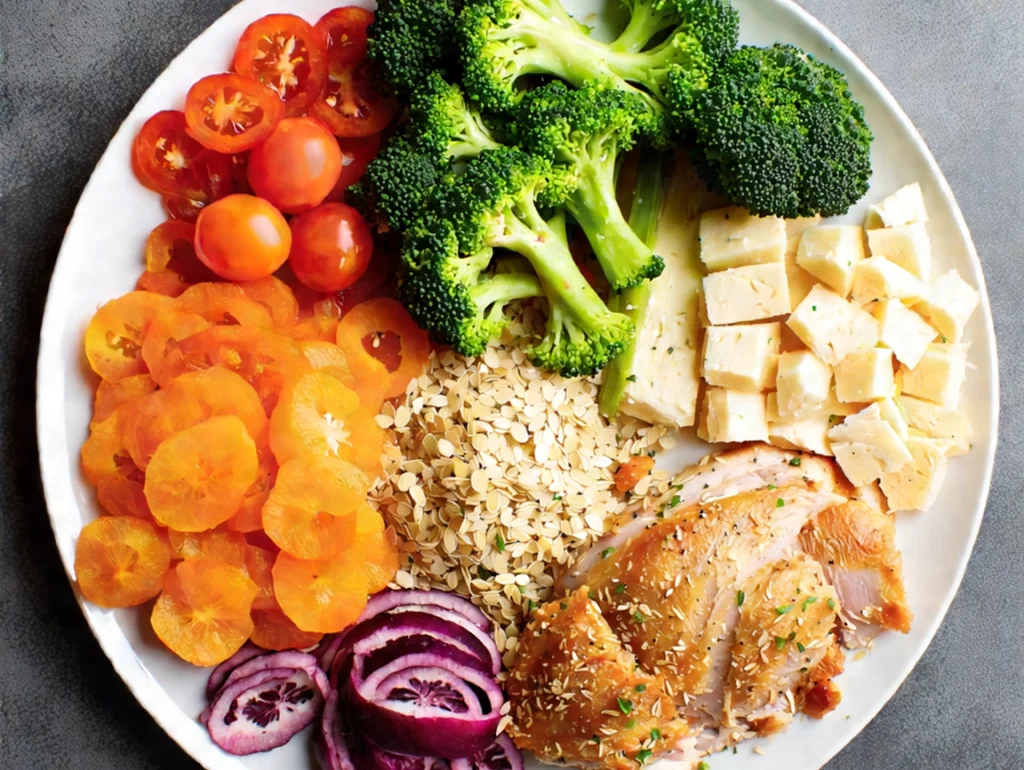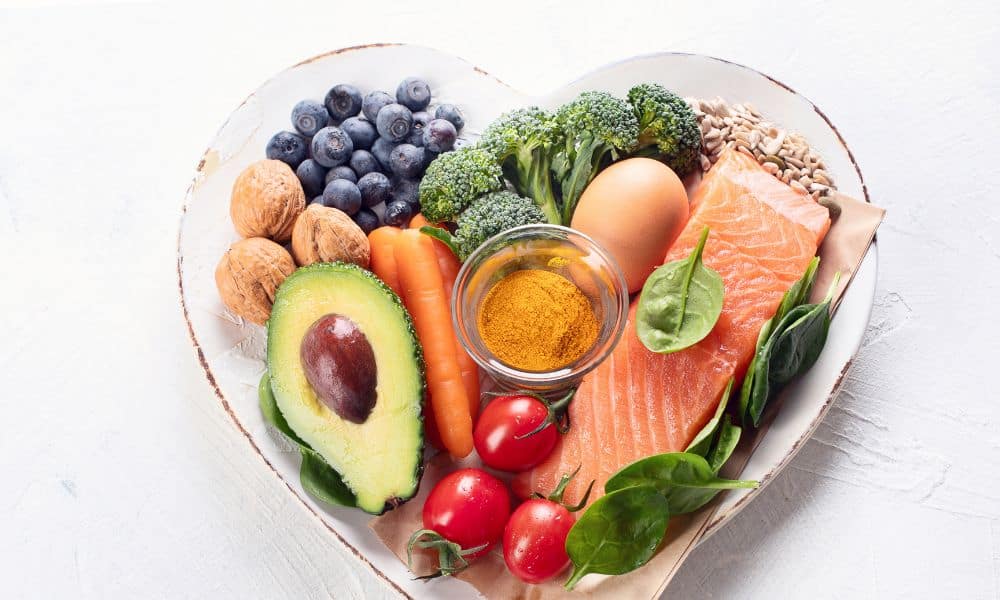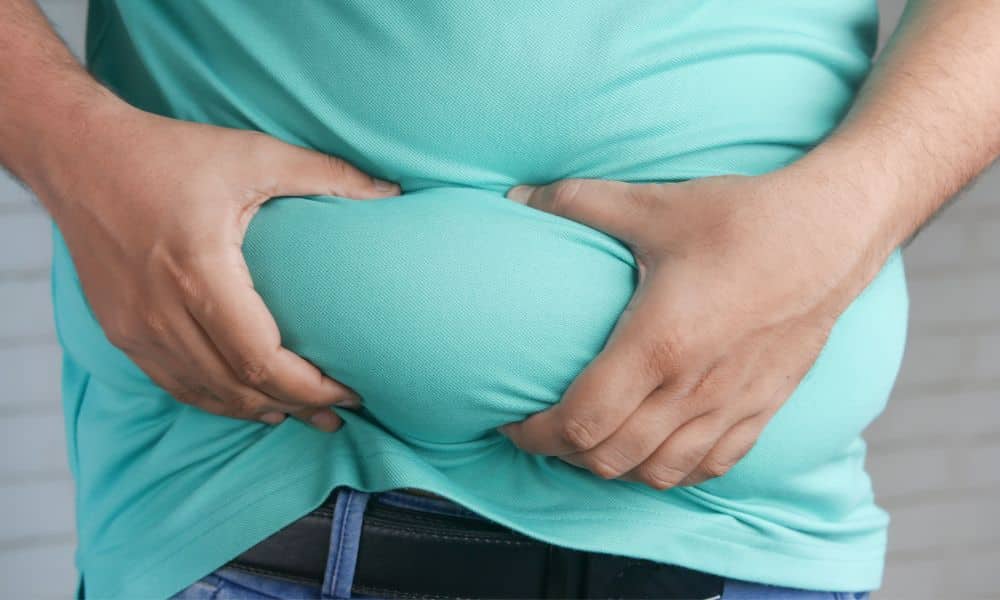Hunger and fat storage work in two very different ways. Your stomach signals hunger based on the volume of food inside it, while body fat storage is determined by caloric intake. This means you can eat large amounts of low-calorie foods and feel full without gaining weight, or you can eat small amounts of high-calorie foods and gain fat while still feeling hungry.
To stay full while losing weight, you need the right balance of protein and fiber. These nutrients help control hunger, improve digestion, and prevent overeating—all while keeping calories low. Let’s break down how you can use food volume, protein, and fiber to stay satisfied and lose fat efficiently.
How Does Your Stomach Signal Hunger?
Your stomach sends hunger signals based on how stretched it is. When you eat, your stomach expands, activating stretch receptors that signal your brain that you are full. However, the stomach doesn’t measure calories—only food volume.
This is why low-calorie, high-volume foods like vegetables, lean protein, and whole grains fill you up without adding excess calories. On the other hand, high-calorie, low-volume foods like fried foods, candy, and oils provide little stomach expansion but pack a lot of energy, leading to overeating and fat storage.
Examples of Low-Volume vs. High-Volume Foods
| Food | Calories per 100g | Fullness Effect |
|---|---|---|
| Spinach | 23 kcal | Very high |
| Chicken breast | 165 kcal | High |
| White rice | 130 kcal | Moderate |
| French fries | 312 kcal | Low |
| Peanut butter | 588 kcal | Very low |
How Does Your Body Store Fat?
Fat storage is determined by caloric intake vs. caloric burn. When you consume more calories than you burn, your body stores the extra energy as fat. This means that:
- If you eat low-volume, high-calorie foods, you can gain fat while still feeling hungry.
- If you eat high-volume, low-calorie foods, you can feel full while losing fat.
The key is to focus on foods that fill your stomach without adding excess calories—and that’s where protein and fiber come in.
How Protein Helps You Stay Full While Losing Weight
Protein is the most satiating macronutrient. It helps you stay full longer because:
- It slows digestion, keeping food in your stomach longer.
- It triggers satiety hormones like peptide YY and GLP-1, reducing hunger.
- It preserves muscle mass, which helps maintain metabolism while in a calorie deficit.
How Much Protein Do You Need for Weight Loss?
The ideal protein intake for weight loss is 1.6 to 2.2 grams per kilogram (or 0.7 to 1.0 grams per pound) of body weight.
- Example: If you weigh 150 lbs (68 kg), aim for 110–150g of protein per day.
Best Protein Sources for Staying Full
| Food | Protein per 100g | Calories |
|---|---|---|
| Chicken breast | 31g | 165 kcal |
| Greek yogurt | 10g | 59 kcal |
| Tofu | 8g | 76 kcal |
| Lentils | 9g | 116 kcal |
| Eggs | 13g | 155 kcal |
How Fiber Keeps You Full on Fewer Calories
Fiber is a type of carbohydrate that slows digestion and increases food volume without adding excess calories. It absorbs water, expands in the stomach, and promotes fullness and gut health.
There are two types of fiber:
- Soluble fiber (found in oats, beans, and flaxseeds) absorbs water and forms a gel, slowing digestion and stabilizing blood sugar.
- Insoluble fiber (found in vegetables, whole grains, and nuts) adds bulk to food, making you feel full longer.
How Much Fiber Do You Need for Weight Loss?
The recommended daily fiber intake is:
- Men: 30–38g per day
- Women: 21–25g per day
Best High-Fiber Foods for Fullness
| Food | Fiber per 100g | Calories |
|---|---|---|
| Chia seeds | 34g | 486 kcal |
| Lentils | 8g | 116 kcal |
| Broccoli | 2.6g | 55 kcal |
| Oats | 10g | 389 kcal |
| Apples | 2.4g | 52 kcal |
How to Use Protein and Fiber to Stay Full While Losing Weight
To maximize fullness while keeping calories low, follow these steps:
- Prioritize High-Protein Foods – Aim for 20–30g of protein per meal to stay full and preserve muscle.
- Load Up on High-Fiber Foods – Fill half your plate with vegetables, beans, and whole grains to keep hunger at bay.
- Eat High-Volume, Low-Calorie Foods – Choose foods with high water and fiber content, like soups, salads, and lean proteins.
- Limit Processed, High-Calorie Foods – Avoid foods that pack too many calories in small portions, like fried snacks and sugary treats.
- Drink Water with Meals – Water expands fiber in your stomach, enhancing fullness.
Sample Meal Plan to Stay Full While Losing Weight
| Meal | Foods | Calories | Protein | Fiber |
|---|---|---|---|---|
| Breakfast | Oatmeal + Greek yogurt + berries | 300 kcal | 20g | 8g |
| Lunch | Chicken breast + quinoa + broccoli | 450 kcal | 40g | 10g |
| Snack | Apple + peanut butter | 250 kcal | 8g | 5g |
| Dinner | Salmon + sweet potatoes + asparagus | 500 kcal | 45g | 7g |
| Total | 1,500 kcal | 113g | 30g |
This meal plan keeps calories low while maximizing protein and fiber, keeping hunger in check and supporting fat loss.
Final Takeaways
- Your stomach signals hunger based on food volume, not calories.
- Fat storage is determined by calorie intake, not food volume.
- Protein and fiber help you stay full while keeping calories low.
- Choose high-volume, low-calorie foods like vegetables, lean protein, and whole grains.
- Use protein (1.6–2.2g/kg) and fiber (25–38g/day) to control hunger and support fat loss.
By focusing on food volume, protein, and fiber, you can stay full while losing weight and avoid the hunger that often leads to diet failure.
Read Next…
- How to Stay Full While Losing Weight: The Role of Stomach Volume and Calories
- Why 2000 Calories? The Origin and Role of the Standard Daily Value
- What to Expect from a Check-In with an Online Health Coach
- How to Track Nutrition and Make Adjustments to Reach Your Health and Fitness Goals
- How to Set Diet Goals to Reach Your Health and Fitness Goals




